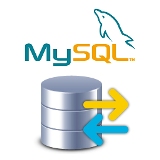Import/Export MySQL
 Generally
speaking importing and exporting data in the MySQL is not a difficult task and
there are three different ways specified for the efficient working. The first
method is to perform it through graphical means with the help of phpMyAdmin while the method is not highly
recommended in case of uploading heavy files on system. The next method is the
utilization of the SSH tunnel in which a third party is used to execute the
importing function for the system. The last method is to make use of the
command line client for MySQL through the SSH connection.
Generally
speaking importing and exporting data in the MySQL is not a difficult task and
there are three different ways specified for the efficient working. The first
method is to perform it through graphical means with the help of phpMyAdmin while the method is not highly
recommended in case of uploading heavy files on system. The next method is the
utilization of the SSH tunnel in which a third party is used to execute the
importing function for the system. The last method is to make use of the
command line client for MySQL through the SSH connection.
As there are
different ways used to develop the backup or restoring for the MySQL yet there
are some limitations in each method. The best way recommended is to perform the
task locally which helps in dumping of data on the disk in a much faster speed.
By simply using the dumping procedure as well as utilities one can perform the
task in much better time and error free method.
Import data of MySQL
One of the
widely used methods for restoring or importing data on the server is to start
creating with the username for MySQL. Once the account information is made that
includes a database, password and username, one is ready for the further
proceedings.
·
Upload
the dump file of the SQL to the account from the database. Majority files can
be recognized with .sql extensions.
·
The
file will contain the necessary statements and the tables on which the action
of reinserting will be performed.
·
After
uploading of the file, a SSH account is required and a special command is run
to make it function.
·
Replace
the mysqluser with the username created by you while the statement of mysqldb
will be substituted with the database of the sql created. While the last
statement of dbfile.sql will be replaced with the name of the respective sql
dump file location.
·
A
password will be needed for the necessary action and once it matches with the
system, it will immediately load the data. Any error in the dump file path will
result in failure in uploading of the file.
Export data for MySQL
·
Exporting
the data is convenient when compared to the steps followed for importing. Yet
the first step for both the tasks remains the same as one need to create the
SSH account.
·
Once
the SSH account is generated we will take the same example of the previous
statement. The command that has been used to initiate the process earlier.
·
The
next step is to provide the username and password to the system that will
further helps in replacing the required statement.
·
As
soon as the password matches with the system, there will be a file created that
contains the data on the home directory. Further FTP can be sued in order to
download the given file.
·
If
the file is not to be used again after downloading, it is highly recommended to
delete it on order to not to be used for the server in future.










0 comments:
Post a Comment